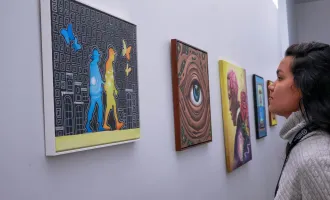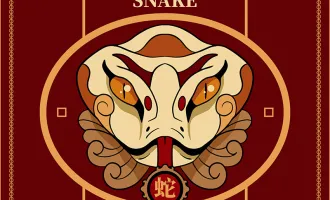
Photo by Gerardo Covarrubias on Unsplash
This Date in UCSF History: Celebrating the Day of the Dead
Originally authored by pharmacy student Oliver Übeda and published in Synapse on November 1, 2012.
The ritual of Día de los Muertos (Day of the Dead) dates back to the era of the Aztecs in Mexico. According to scholars, when the Spaniards arrived in the New World, they encountered the Aztecs performing pagan rituals, wearing skull masks and dancing to honor the goddess Mictecacihuatl, the Lady of the Dead.
The Spaniards purposefully attempted to integrate the local traditions into Catholicism, after unsuccessfully trying to eradicate the festivities. They decided to move and shorten the monthlong celebration from August to November 1 and November 2 (All Saints’ Day and All Souls’ Day), to coincide with the Catholic holidays.
The celebration remembers departed ones and has taken hold in its own way in many Meso-American cultures.
I became aware of Día de los Muertos in Los Angeles more than a decade ago, through friends who were originally from Oaxaca, Mexico. They told me about the celebration and took me to a traditional Oaxacan restaurant that had an altar with a large pyramid of fruits, sugar skulls, candy, bread, candles and drinks on it.
They told me that traditionally in Oaxaca, the altars are built either on October 30, on our Halloween, or a week before November 2.
The purpose behind the ritual is to invite a visit from loved ones who have passed on. The altar is meant for the departed, who may be hungry and thirsty after traveling from the other side to visit. The dead are honored and remembered, their graves cleaned and decorated with food offerings and orange Mexican marigolds.
The living end up eating the goods, which consist of favorite dishes and drinks from those remembered. People commune with each other and tell stories of their loved ones. November 1 is Día de los Angelitos (Day of the Little Angels) when children who have died are remembered. November 2 is Día de los Muertos and is traditionally reserved for adults to be remembered.
Coping with the loss of loved ones is a difficult experience for anyone. Sharing grief at such times with others is a way to lighten that grief. Día de los Muertos is a way to honor those who have come before us, or came to us, brought love into our lives and are now missed. It is also a way for us to share our grief with others and know that we are not alone.
The ancient Aztecs believed that death was not the end, but the beginning of a different journey.



